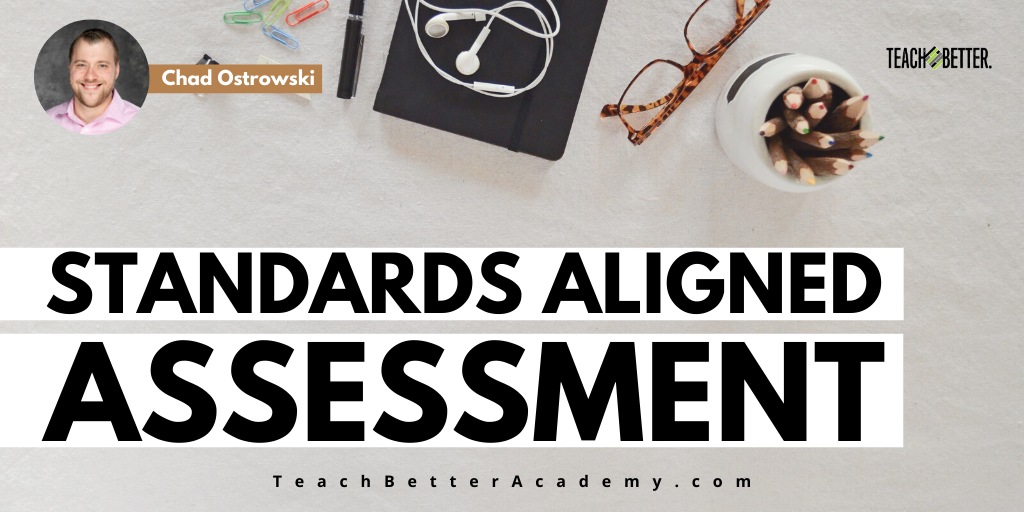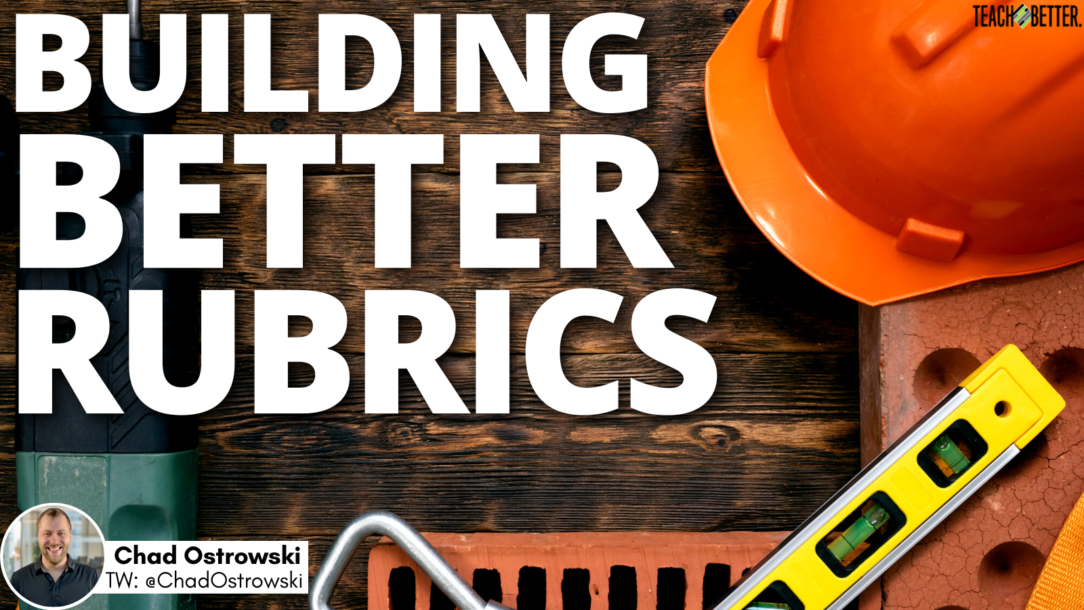In This Post:
- An experience with a badly created rubric.
- What rubrics should measure… and what they shouldn’t.
- Ideas to include students in rubrics and assessment.
Some time ago, I sat listening to presentations from my students. I paused at a student who obviously had not understood the concepts they were presenting on. The student spoke well, included the required components in the presentation, and created neat and well designed slides. But they clearly learned very little based on their responses to questions, and they had an inability to deeply explain the concepts from the presentation.
As I prepared to provide the student a less than stellar grade on the project, I realized I couldn’t. Not because they somehow proved they knew the content better than it seemed, but because they had met all the requirements on my rubric.
It was a simple 1-4 point rubric with categories. The categories included things that sound great. But do they really measure understanding? Categories like…
- All required components are included in presentation
- Slides are well developed and easy to read
- Speaks clearly during presentation
The problem lies in the fact that these do not measure the learning goals. The student successfully met all these categories, even though they didn’t have a great understanding of the concept.
And I couldn’t provide any meaningful feedback. Because I had created a bad rubric to measure their understanding.
This moment caused me to rethink rubrics. Here are a few of the things that I changed.
It should always be the mastery of the content standard that we grade and measure with rubrics...NOT the completion or appearance of the product. Click To TweetRubrics Should Reflect Knowledge NOT Task Completion
The first way you can easily improve rubrics is by making them mastery-based. That is, based on mastery of the content and not completion of the project itself.
The project or task you are grading should show a student’s mastery. It’s completion should require the student to have learned and developed content skills. It is these skills and learning that should be measured, not the product.
For example, instead of “All required components are included“, you can say “Student can explain and define the characteristics of [topic]“.
By using learning objectives and targets instead of arbitrary descriptors of the project, your rubric will not only be more accurate, but it will more closely align to the daily instruction and learning in the classroom.
Neatness Shouldn’t Count
I know some of you are getting angry as you read this, but before you send me an angry email just hold on. I am not saying that your students shouldn’t create presentable products of learning, but that’s not what we should be measuring (unless that is the skill we are measuring).
If you are an ELA teacher and you have taught students to deliver a clear and concise message using multiple modes of communication (verbal, visual etc.), then the product would become something you should measure. In this case, you are assessing their ability to effectively communicate their message, and the neatness of the visual may impact that.
However, if you are just trying to figure out if a student understands the steps of a scientific process, then that is what you should be measuring. Not how nice their product, presentation, or poster is.
It should always be the mastery of the content standard that we grade and measure with rubrics…NOT the completion or appearance of the product.
This also includes things like “Uses lots of color.” This has NOTHING to do with the students’ understanding of the material and, therefore, shouldn’t be on the rubric.
Consider Student-Centered Rubrics or Grading
Many teachers I’ve worked with implement student meetings or conferencing to produce a final grade.
This could involve the teacher creating a rubric and having the student fill it out, defending the case for how their project demonstrates learning. This not only cultivates great discussion and conversations, but will most likely show you what your student knows far more effectively than a traditional “here’s your grade” situation.
By involving the learner in this process, we are holding them accountable for their work and mastery of the learning targets or objectives of the project. We are also allowing them to defend their work. This works very well with providing the opportunity to correct or re-do assignments. Students can either accept the feedback and grade, or they can re-work it to improve their understanding and improve their mastery score.
[scroll down to keep reading]
The next time you are watching students present or evaluating student projects, papers, or assignments with a rubric, simply ask yourself, “Am I measuring mastery and knowledge or completion of a task?”
This is a simple way to ensure your rubrics are mastery-based and more effective and accurate.
About Chad Ostrowski
Chad Ostrowski is the co-founder of the Teach Better Team and the creator of The Grid Method, but he is a middle school science teacher at heart. He now travels the country sharing his story, working with teachers, schools, and districts to help them to reach more students.



